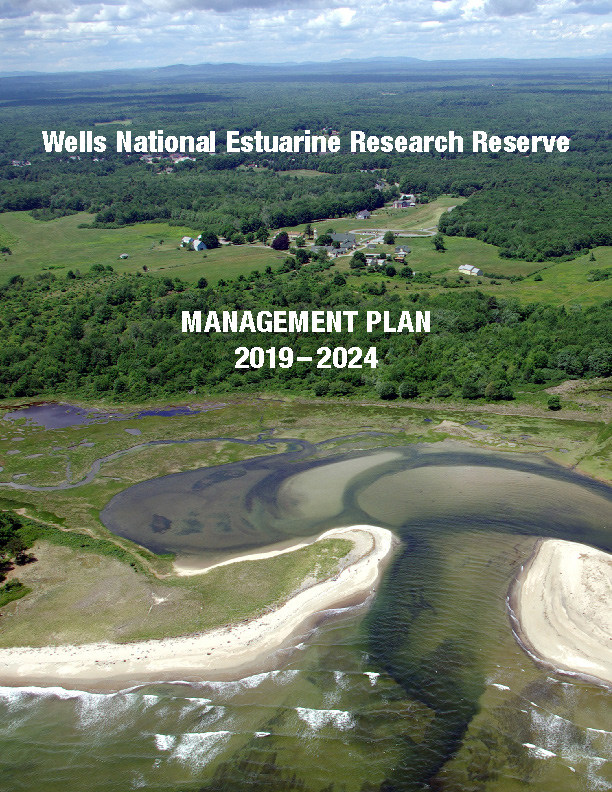The Wrack
The Wrack is the Wells Reserve blog, our collective logbook on the web.
The Wrack is the Wells Reserve blog, our collective logbook on the web.
2020 used to be the future. It was a year for distant sea level rise projections, when flying cars were supposed to fill the skies, when computers would ruin our lives. It all felt so far away. And now 2020 has arrived, sans flying cars, but with plenty more in store.
But why only look one year ahead, or one year back? We stand on the edge of a new decade. Let's think bigger.
Over the past four decades, the Wells Reserve has evolved from a back-of-the-envelope idea to a national leader in coastal science. To continue that evolution, every five years the reserve, and also its partner Laudholm Trust, revise their management and strategic plans to keep up with the changing times. The next five years, and the five years after that, and the five, ten, and fifty years after that, will be a critical time for your reserve. Our coast is changing; Maine’s population is changing; the world’s climate is changing. The Wells Reserve and Laudholm Trust will continue to change with them.
The Wells Reserve at Laudholm began around a kitchen table in the mid-1970s as an effort to save historic Laudholm Farm from development. Local citizens formally incorporated Laudholm Trust as a nonprofit in 1982 in order “to preserve land forever for conservation of water, wetland, beaches, farmlands, forests, wildlife, and open space, and to keep these natural resources forever available to the public for education, research, and other compatible purposes.”
The Trust—at that time an all-volunteer group—spearheaded the early fundraising and community building efforts to purchase Laudholm Farm and establish, with major support from the Town of Wells and the National Oceanic and Atmospheric Administration (NOAA), a “national estuary sanctuary” that today protects the Ogunquit, Webhannet, and Little river salt marshes.
Designated a sanctuary (later relabeled “national estuarine research reserve”) by NOAA in 1984, the Wells Reserve, headquartered at Laudholm Farm, has since built seven miles of trails, a visitor center with exhibits, a research lab, a dormitory, and countless programs, regional initiatives, and collaborations. Today, the reserve’s mission is “to understand, protect, and restore coastal ecosystems of the Gulf of Maine through integrated research, stewardship, environmental learning, and community partnerships.”

Laudholm Trust has continued to serve as the reserve’s local partner, matching 30:70 the federal operating funds appropriated by Congress for the reserve’s science, education, and conservation programs. The Trust raises additional funds to help with the maintenance, preservation, and improvement of the historic site.
The period of the previous Laudholm Trust Strategic Plan, 2015-2019, saw sustained growth in the Trust’s revenues ($800K in FY19 vs. $600K in FY14), increased staff capacity (4 full-time and 3 part-time as of October 2019), and the accumulation of a significant "rainy day fund" (24 months of operating funds). The Trust has continued to fine-tune its operations while keeping non-personnel expenses flat. Membership and events, in particular, are at heights not seen since the formative years of the early 1990s; this success has in turn allowed the Trust to direct ever more support to its partner and reason-for-being, the Wells Reserve.
Where do we go from here? Onward, of course. The complete version of the reserve’s federally approved management plan for 2019-2024 is now publicly available, alongside a two-page summary of the Laudholm Trust’s new 2020-2024 Strategic Plan. Together, they chart out the next five years in our continuing and shared missions. We foresee growth in visitation and lands, expansions in geographic reach and programmatic scope. We believe in bright days ahead and also challenges to come. We wouldn't expect, or want, anything less. Do come with us, as we continue to be your Wells Reserve.
Sincerely,
Nik Charov
President, Laudholm Trust
Chairman, Wells National Estuarine Research Reserve Management Authority
Paul Dest
Executive Director, Wells National Estuarine Research Reserve